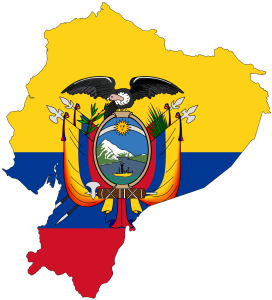Everything You Need To Know For Ecuador
Geographical Position And Climate Of Ecuador
Ecuador is situated on the northwest coast of South America, bordered by Colombia to the north, Peru to the south and east, and the Pacific Ocean to the west. The country also includes the Galápagos Islands, located about 1,000 km west of the mainland in the Pacific.
The climate in Ecuador varies significantly due to its equatorial location and diverse topography, which includes coastal plains, Andean highlands, Amazon rainforest, and the Galápagos Islands.
Brief History Of Ecuador
Ecuador’s history is rich, beginning with ancient indigenous cultures such as the Valdivia and the Cañari. The Inca Empire expanded into the region in the 15th century until the Spanish conquest led by Sebastián de Benalcázar in 1533. Ecuador became part of the Spanish Empire for nearly 300 years, contributing to its colonial architecture and cultural heritage.
The struggle for independence began in the early 19th century, culminating in 1822 when Antonio José de Sucre, a lieutenant of Simón Bolívar, won the Battle of Pichincha. Ecuador joined Gran Colombia but separated in 1830 to become an independent republic. The country has since experienced periods of political instability, border conflicts, particularly with Peru, and economic challenges.
In recent decades, Ecuador has seen significant progress in terms of political stability and economic development. It is known for its rich biodiversity, indigenous communities, and efforts to balance environmental conservation with economic needs.
Religion Of Ecuador
Ecuadorians are a religious people. They profess Roman Catholicism.
Language Of Ecuador
Spanish is the country’s official language.

Ecuador is a small yet incredibly diverse country that offers a wealth of attractions for tourists. Its four distinct regions—the Amazon, the Andes, the Pacific Coast, and the Galápagos Islands—provide a range of experiences from adventure travel to cultural exploration. Visitors can marvel at the biodiversity of the Amazon rainforest, hike the volcanic landscapes of the Andean highlands, relax on tropical beaches, or observe unique wildlife on the Galápagos Islands. Ecuador’s rich cultural tapestry is evident in its markets, colonial architecture, and indigenous heritage. With its compact size, Ecuador allows travelers to experience dramatic changes in scenery and climate within a single day.
Places You Must Visit In Ecuador
Before You Visit Ecuador
Travel to Ecuador
Travelers can get to Ecuador primarily by air, with the main international airports being Mariscal Sucre International Airport in Quito and José Joaquín de Olmedo International Airport in Guayaquil. These airports offer direct flights to and from major cities in the Americas, Europe, and beyond.
Overland entry is possible through border crossings with Colombia in the north and Peru in the south, which can be accessed by bus or car. Maritime entry is less common but available for travelers arriving by cruise ship at ports like Manta.
Once in Ecuador, domestic flights, buses, and rental cars are convenient ways to travel between regions and explore the country’s diverse landscapes and attractions.
Visas for Ecuador
Most travelers can enter Ecuador without a visa for stays of up to 90 days within a one-year period for tourism, business, or to transit. This includes citizens from the United States, Canada, Australia, and most European countries.
For longer stays or other types of visas, such as student or work visas, travelers must apply at an Ecuadorian consulate or embassy prior to their trip. It’s important to check the latest visa requirements from official sources before traveling, as regulations can change.
Some nationalities do require a visa to enter Ecuador, so it is essential for all travelers to verify entry requirements based on their specific nationality before planning their trip. Additionally, visitors may extend their stay beyond 90 days by applying for an extension with Ecuadorian immigration authorities.
Best time to visit Ecuador
The best time to visit Ecuador depends on the regions you plan to explore:
- Andean Highlands (Sierra): The dry season from June to September is ideal for hiking and mountain activities, with clearer skies and less rain.
- Amazon Rainforest (Oriente): While it’s wet year-round, drier periods occur from December to March, making this a good time for wildlife viewing.
- Pacific Coast (Costa): The warmest months are from December to May, which is also the wet season but offers the best beach weather.
- Galápagos Islands: Wildlife viewing is excellent year-round, but if you prefer warmer, calmer seas for snorkeling, visit from December to May. For cooler temperatures and active marine life, June to November is ideal.
Keep in mind that Ecuador’s equatorial location means temperatures don’t vary much throughout the year; however, regional climates can change due to altitude and microclimates. It’s also worth considering local festivals, such as the colorful Carnival or Inti Raymi, when planning your visit.
Important Information
Capital – Quito
Territory – 283,561 km2
Currency – United States dollar (USD)
Time Zone – UTC-5 (ECT) / UTC-6 (GALT)
Population – 17,483,326
Demonym – Ecuadorian
